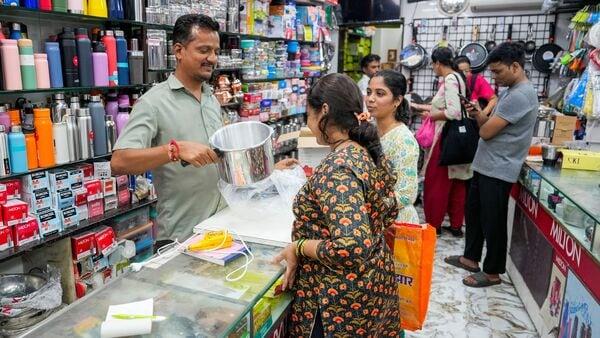GST Changes From September 22: What's Cheaper, Costlier In Bengaluru, And Why Double-Check Mrps
Finance Minister Nirmala Sitharaman also underlined that many electronic items used by the middle class - including TVs, air conditioners, and some bikes - have been moved to the 18 per cent slab.
For consumers, the changes bring a mixed impact . Prices of some everyday essentials and services have fallen, providing relief to households already grappling with inflation. Conversely, leisure, luxury, and certain lifestyle-related items have become more expensive, prompting many to reconsider their spending habits.
Also read | Amul cuts prices of over 700 items after GST reforms: From ghee and paneer to butter – Check what will get cheaper
Traders and retailers in Bengaluru report that the transition has been smooth so far, though they are closely monitoring how customer demand evolves in the coming weeks.
What's cheaper and costlier for Bengaluru consumersCheaper:Daily essentials, including packaged foods, edible oils, and household cleaning products
Public transport services, such as app-based auto and cab rides within the city
Small electronic accessories like chargers, earphones, and USB cables
Medicines for common ailments and select medical devices
Read | GST rate cuts: FMCG giant ITC to pass on 'full benefit' to customers across portfolio - Details here
Costlier:Restaurant dining, especially at air-conditioned and premium outlets
Consumer durables, including refrigerators, washing machines, and air-conditioners
Beauty and grooming services at salons and spas
Premium smartphones and imported gadgets
For Bengaluru residents, the revised tax structure may slightly reduce grocery bills, while dining out or upgrading home appliances could become more expensive. Experts advise consumers to plan purchases carefully to make the most of the new GST regime.
Why you should double-check product MRPsThe Department of Consumer Affairs has issued a revised advisory to help companies implement GST changes, though local stores may face some confusion. Products made before September 22 may carry both the old and revised MRPs, potentially causing overcharging. For instance, a biscuit pack with an original MRP of ₹50 may now show ₹48, but some shopkeepers could still charge the higher price. Firms no longer need to advertise revised MRPs in newspapers and only have to circulate updated price lists to dealers, with copies to legal metrology authorities. Old packaging can be used until March 31, 2026, with corrections via stickers, stamps, or digital printing. Buyers are advised to check prices carefully.
Legal Disclaimer:
MENAFN provides the
information “as is” without warranty of any kind. We do not accept
any responsibility or liability for the accuracy, content, images,
videos, licenses, completeness, legality, or reliability of the information
contained in this article. If you have any complaints or copyright
issues related to this article, kindly contact the provider above.
Most popular stories
Market Research

- Ozak AI Partners With Pyth Network To Deliver Real-Time Market Data Across 100+ Blockchains
- Blockchainfx Raises $7.24M In Presale As First Multi-Asset Super App Connecting Crypto, Stocks, And Forex Goes Live In Beta
- B2PRIME Secures DFSA Licence To Operate From The DIFC, Setting A New Institutional Benchmark For MENA & Gulf Region
- BTCC Summer Festival 2025 Unites Japan's Web3 Community
- From Zero To Crypto Hero In 25 Minutes: Changelly Introduces A Free Gamified Crash Course
- BILLY 'The Mascot Of BASE' Is Now Trading Live On BASE Chain






















Comments
No comment